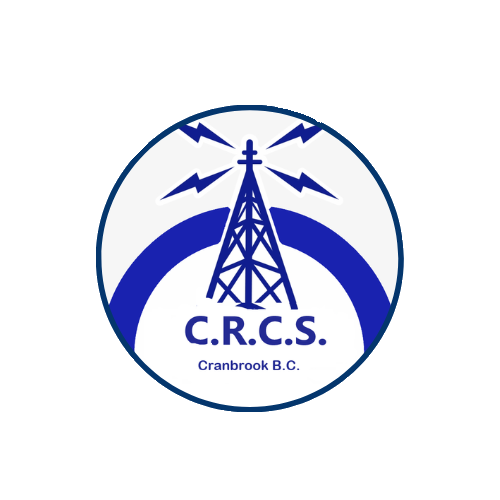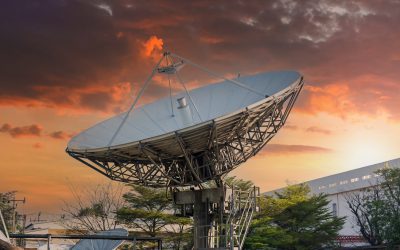As winter approaches, ham radio operators in colder climates face unique challenges that come with dropping temperatures, icy conditions, and potential power outages. Staying connected during these months requires preparation, both in equipment and operational strategies. In this guide, we’ll explore the essentials of cold weather communications—how to keep your ham radio equipment in peak condition, preserve battery life, and stay connected during winter storms or power outages.
Understanding Cold Weather Challenges for Ham Radio
Winter brings a variety of hurdles for ham radio enthusiasts, particularly in remote or rural areas. Cold temperatures can affect both the functionality of radio equipment and operator comfort. Common winter challenges include:
- Battery Performance: Batteries lose efficiency in cold temperatures, affecting the lifespan and reliability of your gear.
- Signal Propagation: Atmospheric changes impact how radio waves travel, potentially altering the range and clarity of communication.
- Physical Accessibility: Snow and ice can hinder access to outdoor antennas, towers, and even emergency shelters or repeater stations.
- Power Outages: Severe winter storms increase the likelihood of power outages, necessitating backup power sources.
Each of these factors demands specialized strategies and preparedness to ensure smooth and reliable communication all winter long.
Equipment Maintenance for Winter Communications
Ham radio operators should pay extra attention to their equipment as temperatures drop. Cold weather can impact both handheld devices and more substantial home or mobile setups. Here are some key maintenance practices:
1. Inspect and Weatherproof Antennas and Coaxial Cables
- Seal Connections: Water infiltration into coaxial cables can cause shorts or corrosion. Use weather-resistant sealant tape to secure and waterproof connections.
- Inspect for Ice Accumulation: Ice can weigh down antennas, damaging mounts and connections. Make regular inspections part of your routine, especially after heavy snow or ice storms.
- Antenna Positioning: If possible, install antennas in areas less prone to ice buildup. Tilted antennas are less likely to collect ice compared to horizontally aligned ones.
2. Battery Storage and Maintenance
- Cold Storage Considerations: When not in use, keep batteries at room temperature to prevent rapid depletion. Extreme cold can reduce battery life by up to 50%, so warming batteries before use can improve performance.
- Power Supply Backup: Consider using Lithium Iron Phosphate (LiFePO4) batteries, which perform better in cold than traditional lead-acid batteries. However, ensure any battery used is well-insulated against cold exposure.
- Regular Testing: Test all batteries before a storm arrives. Replace or recharge as needed, and store spares in a thermally-insulated bag for field use.
3. Check and Update Emergency Gear
- Heated Handheld Microphones: Using a heated microphone can reduce frost buildup and help the device function longer in colder environments. Some manufacturers offer microphones that retain warmth for better performance in freezing conditions.
- Cable Flexibility: Cold weather can make cables brittle, increasing the risk of cracks. Opt for cables designed to remain flexible in low temperatures, or ensure they are well-protected from exposure.
Maximizing Battery Life in the Cold
Battery conservation becomes critical when operating in cold conditions. Follow these tips to extend battery life:
- Pre-Warm Batteries: If using batteries in portable devices, keep them close to your body or in an insulated pouch until needed. Warm batteries are less prone to rapid discharge.
- Utilize Battery-Powered Warmers: Battery warmers are available for various types of batteries and can provide continuous heating, extending battery life significantly.
- Switch to Low Power Modes: Use low-power transmission settings where possible. Reducing the power output can help conserve battery life, especially during prolonged communication sessions.
- Limit Unnecessary Transmissions: Staying in “listen mode” rather than frequently transmitting saves power and prevents the battery from draining quickly.
- Plan for Backup Power: Solar chargers or small generators can be lifesavers during extended power outages. Remember to keep any fuel-powered equipment in safe, ventilated areas, as carbon monoxide buildup can be dangerous.
Winter Storm Preparedness and Emergency Communications
Winter storms can be unpredictable, so ham radio operators should be ready to communicate reliably in emergencies. Preparation here is key to ensuring a stable, ready-to-deploy communication network.
1. Establish Winter Communication Protocols
- Set Local Frequency Channels: Predetermine frequencies with other local operators for quick and easy coordination. Repeater networks can offer extended range but may experience downtime, so have alternative simplex frequencies prepared.
- Check In Regularly: Establish a schedule for check-ins with your network. These can be every few hours or even daily, depending on the severity of the weather.
2. Prepare Go-Kits
Your go-kit should be winterized, with supplies tailored for cold-weather operation. Items to include:
- Hand Warmers: Handy for both personal warmth and battery insulation.
- Thermally Insulated Battery Pack: Prevents batteries from draining too quickly in cold conditions.
- Backup Radio and Batteries: If the main radio fails, you’ll need a secondary device to maintain contact.
- Emergency Shelter Items: In case you’re stranded, include a sleeping bag, a first-aid kit, and compact food and water supplies.
Effective Cold Weather Communication Techniques
When communicating during cold weather events, clarity and brevity are essential. Here are some practical techniques:
- Use Clear and Concise Language: Cold can be disorienting, so use standard, clear language for efficient communication. Avoid unnecessary chatter and confirm that critical information has been received.
- Emergency Codes and Shortcuts: Set up a list of predefined codes with your network. Shorter, simplified messages allow you to communicate quickly in case of extreme cold or limited power.
- Pre-set Frequencies and Locations: Coordinate pre-arranged frequency points and safe locations with fellow operators. In case of evacuation or emergency, this helps ensure everyone is on the same page.
- Stay Updated with Weather and Alerts: Tune in to local weather reports, emergency broadcasts, and other channels. Use your ham radio to pass along updates to others who may not have access.
Cold Weather Etiquette and Safety Protocols
Respecting shared frequencies and following emergency protocols is especially critical in winter. Here are some cold-weather etiquette guidelines to follow:
- Prioritize Emergency Communication: If you’re in a non-emergency conversation, be prepared to step aside if someone requires the frequency for urgent communication.
- Identify Yourself Clearly: Always identify yourself at the beginning and end of transmissions so others know who they’re speaking to and can confirm your status.
- Keep Calm and Think Ahead: Cold weather can lead to frustration and rushed decisions, so remember to stay calm and think through each step.
Testing and Practice for Winter Scenarios
Regular practice and testing help ensure you’re ready for real winter scenarios. This can include:
- Routine Drills: Schedule regular communication drills during winter months. These should cover not only signal testing but also equipment swaps, battery changes, and emergency check-ins.
- Cold-Weather Equipment Testing: Test all equipment in cold conditions to get a feel for how each piece operates. This is particularly important for portable setups that may be exposed to the elements.
Be Ready, Stay Safe
Preparing for winter as a ham radio operator means anticipating challenges and knowing how to keep communications stable even in the most severe conditions. By focusing on equipment maintenance, battery conservation, and emergency planning, you can be confident in your ability to stay connected when it matters most. The Cranbrook Radio Club Society (CRCS) encourages operators to take these steps seriously as winter approaches, supporting both individual preparedness and broader community safety.




